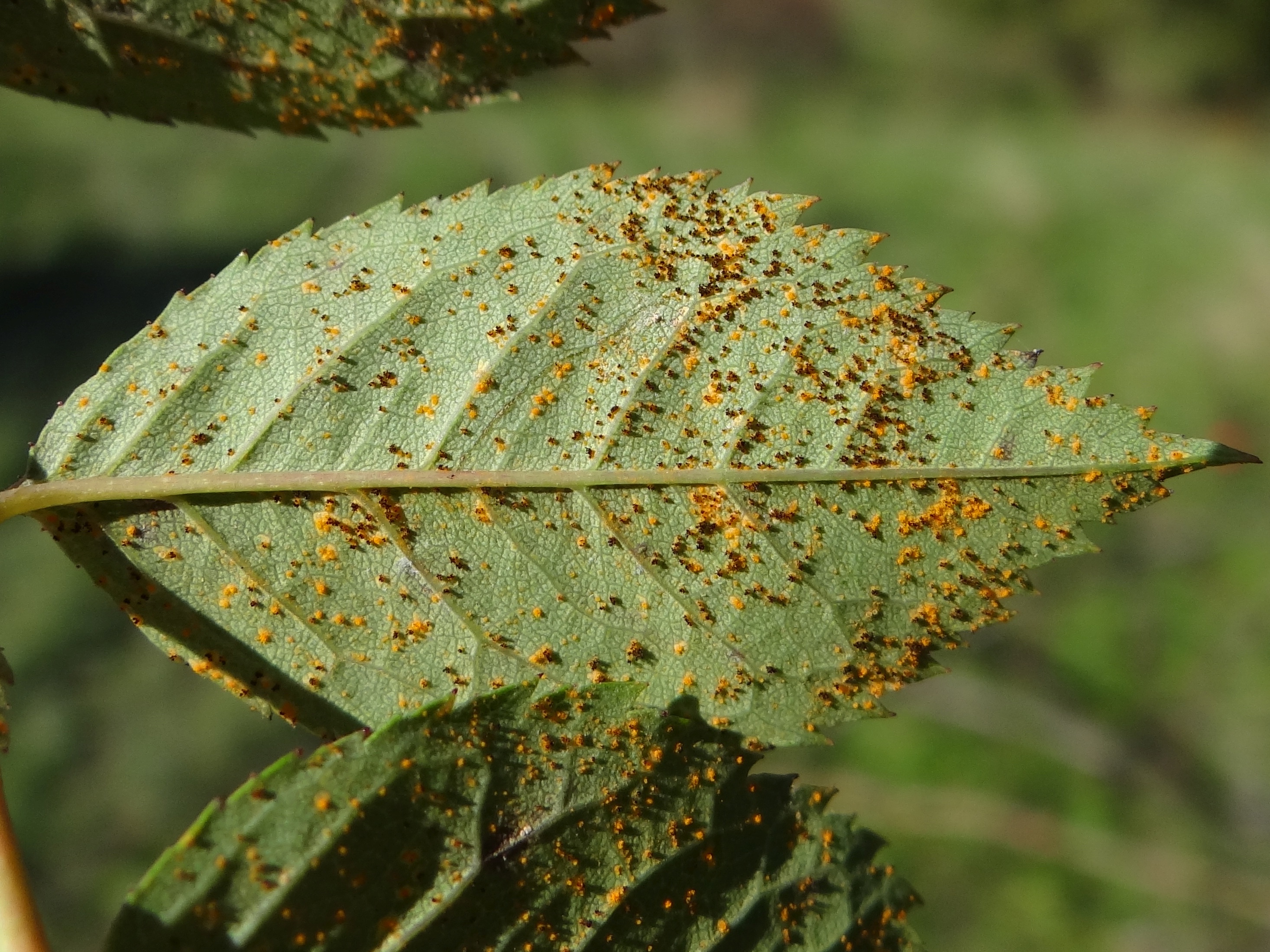
Rust
Phragmidium mucronatum
What is Rose Rust (Phragmidium mucronatum)?
Rose Rust, is caused by the fungal pathogen Phragmidium mucronatum. This rust fungus depends on a living host, and roses are highly susceptible to P. mucronatum. The disease, known as rose rust, manifests as orange or reddish-brown pustules on the undersides of rose leaves. Infected plants may exhibit yellowing of leaves and premature leaf drop. Rust infections are more prevalent in warm and humid conditions, creating favorable environments for fungal growth. While roses are the primary target, P. mucronatum can also infect other plant species
How does Rose Rust (Phragmidium mucronatum) occur?
Most rust fungi have a complex life cycle involving alternating generations between two host plants. However, exceptions like Phragmidium mucronatum (rose rust) and western gall rust are restricted to one host genus. They spread within their limited host population through spore dispersal. Rose rust spreads from infected roses to others through wind, water, or physical contact. Similarly, western gall rust spreads from pine to pine. Despite their specialization, these rust fungi can still propagate within their specific host genus, affecting multiple individuals.
Symptoms
1 - Impact on Plants
•Phragmidium mucronatum causes discolored spots on leaves, leading to premature leaf drop, weakened plants, and reduced flower production. Severe infections can result in defoliation, impacting overall plant health.
2 - Impact on Soil
Rust primarily affects above-ground parts of plants, not directly impacting the soil. However, infected leaves and debris left on the ground can serve as a source of future infections.
Solutions
1 - Cultural Control
• Select varieties that are known to have resistance to rust, as this can significantly reduce the risk of infection. • Plant with adequate spacing to ensure good air circulation, as this helps to minimize humidity levels and prevent rust development. • Avoid overhead watering, as wet foliage creates favorable conditions for rust. Instead, water at the base of the plant. • Regularly inspect for rust symptoms and promptly remove any infected leaves or plant debris. Dispose of them away from the garden to prevent further spread. • Prune to improve airflow and sunlight penetration, which helps keep the foliage dry and less susceptible to rust.
2 - Treatment
• Some organic fungicides, such as neem oil or sulfur-based products, may offer limited control of rust. Check the labels for recommended usage and precautions. • Several fungicides are available for rust control. Common brand names include Daconil (containing chlorothalonil), Banner Maxx (containing propiconazole), Immunox (containing myclobutanil), and Cleary's 3336 (containing thiophanate-methyl). • It is recommended to consult with local experts or garden centers to determine the most suitable fungicide options available in your area for effective rust control on roses.
